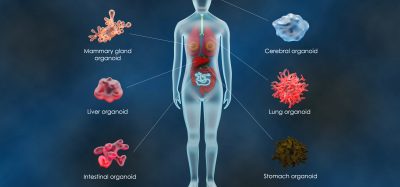Why ATP signalling might change melanoma for good
Posted: 30 May 2025 | Drug Target Review | No comments yet
A new study from Central South University reveals how adenosine phosphate signalling shapes the tumour microenvironment in melanoma, offering a new biomarker for guiding personalised cancer treatment.


Malignant melanoma, a highly aggressive form of skin cancer, poses a significant global health threat due to its resistance to therapy and the complex, heterogeneous nature of its tumour microenvironment (TME). However, a new study by researchers at Central South University has found a biological mechanism that could transform treatment strategies: the role of adenosine phosphate signalling mediated by purinergic P2 receptors (P2Rs).
Adenosine phosphate signalling and the complexity of melanoma
Using multi-omics analysis, the research team identified five distinct subtypes of adenosine phosphate signalling in melanoma, classified under two overarching metaprograms: metabolic and inflammatory. Among these, Subtype 5 emerged as particularly significant. Characterised by high expression of three specific protein coding genes: P2RX1, P2RY12, and P2RY13, which are involved in how cells respond to adenosine phosphate signals. This subtype is closely tied to:
- Immune activation pathways– including interferon-gamma (IFN-γ) signalling, which helps activate immune responses.
- Antigen presentation– a process where cells show pieces of harmful invaders (like cancer cells) to the immune system.
- A broader inflammatory response– which is part of the body’s defence mechanism.
The APsig model: a precision biomarker for immunotherapy
To better quantify this inflammatory subtype, the team developed the Adenosine Phosphate Signalling model (APsig). Applied to over 1,000 tumour samples across nine public cohorts, APsig successfully stratified patients based on prognosis and therapeutic response. High APsig levels were consistently linked to longer overall survival (OS) and a 30–50 percent higher response rate to immune checkpoint inhibitors targeting PD-1/PD-L1.
Biomarkers are redefining how precision therapies are discovered, validated and delivered.
This exclusive expert-led report reveals how leading teams are using biomarker science to drive faster insights, cleaner data and more targeted treatments – from discovery to diagnostics.
Inside the report:
- How leading organisations are reshaping strategy with biomarker-led approaches
- Better tools for real-time decision-making – turning complex data into faster insights
- Global standardisation and assay sensitivity – what it takes to scale across networks
Discover how biomarker science is addressing the biggest hurdles in drug discovery, translational research and precision medicine – access your free copy today
This predictive capability positions APsig as a dual-purpose biomarker, useful not only for assessing prognosis but also for guiding personalised immunotherapy strategies.
Myeloid cells and spatial niches: mechanisms behind APsig
Through single-cell RNA sequencing (scRNA-seq), researchers found that APsig activity is concentrated in myeloid lineage cells such as macrophages and dendritic cells. In these cells, APsig enhances antigen presentation via MHC class I and II molecules, effectively priming the immune system for a response.
Further insights from spatial transcriptomics found that tumours with high APsig expression foster immune cell-rich niches at the tumour-stroma boundary- key sites for immune surveillance and cellular crosstalk. These niches were abundant in cytotoxic T cells and featured elevated T cell receptor (TCR) diversity, hallmarks of an immune “hot” TME. In contrast, immunosuppressive cell types such as M2 macrophages and resting NK cells were depleted in high-APsig environments.
Implications for treatment: beyond PD-L1 and TMB
Current biomarkers like tumour mutational burden (TMB) and PD-L1 expression provide only partial insight into immunotherapy response. APsig offers a more dynamic, functional snapshot of immune activity in the TME.
The researchers propose leveraging APsig to design combination therapies, for instance, pairing immune checkpoint blockade with agents that enhance ATP signalling, thereby amplifying the immune system’s antitumor capacity.
Looking ahead: from melanoma to broader oncology therapies
Although this study focuses on melanoma, its implications are vast. The researchers suggest that adenosine phosphate signalling could play a pivotal role in other solid tumours as well. Efforts are already underway to validate the APsig model in clinical trials and evaluate its potential in guiding personalised treatment regimens, including metabolic reprogramming and cell-based therapies.
Conclusion
This study not only outlines the underappreciated role of purinergic signalling in cancer but also introduces APsig as a powerful new tool in the era of precision oncology. As the field moves toward more personalised and adaptive treatment approaches, adenosine phosphate signalling may become a key component in unlocking durable responses in melanoma and beyond.
Related topics
Biomarkers, Cancer research, Drug Discovery, Immuno-oncology, Immunotherapy, Translational Science
Related organisations
Central South University








